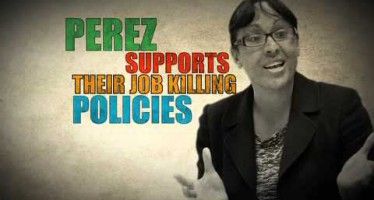A High-speed math problem
JUNE 24, 2010
By JT LONG
A month after a report by the California State Auditor warned of possible delays to a planned $42 billion California High Speed Rail project due to inadequate oversight, a veteran private sector CEO brought on board to steer the controversial project has made hiring a high-powered management team the first stop on the way to right-sizing what could be the largest capital infrastructure investment in the state in 50 years.
Roelof van Ark, former president of the North American division of Alstom SA, builder of Europe’s bullet train system and a possible bidder for California High Speed Rail work, was named in May to take the over position of founding California High Speed Rail Authority Executive Director Mehdi Morshed. Van Ark, who will be taking a “significant” pay cut to collect $375,000 a year, is no stranger to Sacramento. He was president and CEO of Siemens Transportations Systems (manufacturer of the ICE high speed train) based in the capital from 1999 to 2002.
Van Ark started at the authority on June 1 and two days later issued his first statement to the board of directors. “I will be building a stronger, more experienced management team. My own experience, over 30 years of management, always resulted in strong, motivated, close-working team — and that’s what I am going to put together,” said van Ark in a prepared statement. “We’ll be working with the Legislature to ask them to approve our budget – to approve the budget for the project but also for the allowance for the hiring of the management team.”
Improved management is a priority for a lot of people.
The California State Auditor’s Report titled “High Speed Rail Authority: It Risks Delays or an Incomplete System Because of Inadequate Planning, Weak Oversight and Lax Contract Management,” noted a number of accounting and management issues, including paying invoices with improper documentation and lack of systems in place to document use of American Recovery and Reinvestment Act funds. “Noncompliance with grant provisions could jeopardize its ability to receive those funds and to compete for future grants—both of which are essential, given its heavy planned reliance on federal funds,” the report warned.
In the authority’s response to the report, Chairman Curt Pringle pointed to the need to address personnel issues in order to address the oversight shortfalls. “Staffing levels have been a concern of the Authority Board for some time,” read the agency response letter.
One man particularly anxious to reexamine assumptions to ensure they fit with fiscal reality is new High Speed Rail Authority Board member Richard Katz. He is a former state legislator and currently sits on the Los Angeles County Metropolitan Transportation Authority (MTA) and Metrolink boards, and worked on California’s Transportation Blueprint for the 21st Century. He has urged planners to consider cost-cutting measures such as sharing track in parts of Southern California to save an estimated $2 billion.
One way to save money is to save time. To Katz that means the authority needs world-class leadership. “We have a lot of good engineers on the project, but there is not enough direction or communication. We need to get shovel in the ground quickly during the current [low] bidding climate.”
Katz has publicly supported the decision to bring Van Ark on at a salary that is very high by public standards. “This is a $40 billion project that is going to need a serious business person who understands how to get things done to reassure investors.”
Also anxious that every penny is accounted for is Assemblywoman Diane Harkey, R-Dana Point. She introduced Assembly Bill 2121 with support from the Howard Jarvis Taxpayers Association. Originally titled “Eliminate funding for high-speed rail,” it was amended to require the authority to annually adopt a six-year high-speed train program, including a “detailed financial plan.” It passed the Assembly and went to the Senate in early June.
Math Problem
Chuck Baker, president of the National Railroad Construction and Maintenance Association and partner at Chambers, Conlon & Hartwell, a Washington, D.C.-based lobbying firm, isn’t sure one man can change the equation enough to make the numbers pencil out.
“The core problem has been and continues to be money,” Baker said.
The 800-mile San Francisco to Los Angeles line capable of speeds of up to 220 mph has been in the development stages since 1996 with state funding fueling basic planning work each year until it received a major boost from a $9.9 billion Proposition 1A 2008 bond measure.
An updated 2009 business plan estimates this initial phase will run $42.6 billion over 10 years. The plan pencils in $17 billion to $19 billion in federal funding, $4 billion to $5 billion in local funding (much of it n the way of right-of-way, parking fees etc.) and $10 billion to $12 billion in public-private partnerships.
Baker and the auditor’s report both indicated that the math might be flawed.
“The state bond funding is a large sum compared to what other states are investing,” says Baker, but it may not be enough,” Baker warned.
One logistical problem is that the $9 billion of Prop 1A funding for high speed rail has to used to match other investments. So the authority can only access the state funds in the same proportion that it attracts other funds for each leg of the route. Construction plans call for almost $12 billion in spending through 2013, 2.5 times more than the $4.5 billion in combined state and federal funding currently in place, the auditor’s report showed. The authority’s assumptions regarding federal funding are optimistic,” the auditor concluded. “High‑speed rail projects must compete with other non‑transportation demands on federal funds. Competition for any additional federal dollars will be strong and California can expect to receive only a fraction of the total.” So far, the federal government has only contributed $2.25 billion contingent on the project breaking ground in two years. This was 28 percent of the $8 billion in stimulus distributed nationally. While President Barack Obama has made high speed rail a priority, no guaranteed federal funding mechanism is currently in place.
The auditor recommended developing alternative funding scenarios that would chart a course in case planned sources don’t materialize. Chairman Pringle said the authority has alternate scenarios that lengthen the construction timeline and therefore increase the project cost.
“The best case scenario is that if instead of competing each year for $2 billion or so from an appropriations bill, the government created a regular funding stream based on a set formula, then the state could count on it, bond accordingly and borrow against future revenue,” Baker said. Any way you add it up, Baker predicted the federal government would have to play a large part in bridging the funding gap.
Baker doesn’t see private investment as a dependable part of the funding picture because rail doesn’t usually run at a profit. “Without a profit, private investors don’t usually get involved,” Baker said. “They might invest in associated development, but not infrastructure.”
Much of the private investment depends on minimum revenue guarantees based on projected ridership that the Legislative Analyst warned might violate state law prohibiting an operating subsidy. The authority is working with UC Davis to refine the ridership forecasting models, which have been called into question by a number of groups.
On top of the revenue questions, some rail experts are predicting the final price tag could be $50 billion or $60 billion or more. A lot depends on the final route, how much underground digging is required and how long the project takes. “The lack of funding makes delays over environment and NIMBY (Not In My Back Yard) complaints about the route even more powerful,” Baker warned. “If they had the money in hand and the momentum, they could deal with those concerns and move on, but without funding, they are stalled in community meetings.”
Van Ark pledged to bring “a new, fresh set of eyes to the authority and revisit any of the assumptions that have been made.” His stated goal was “to enhance the project, to accelerate the project, to reduce the cost of the project, to reduce to the risks of the project – to possibly change the way we may fund the project.”
If anyone can find a way to make the numbers work and the project gets done, it will be one of the most high profile projects in the county. “To quote vice president Joe Biden, ‘It would be a big ‘F-ing’ deal,” Baker said.
Related Articles
Eminent domain mass delusion hits San Berdoo
July 16, 2012 by Wayne Lusvardi A few hundred years ago there was the famous Dutch Tulip Mania of 1637.
Ending water wars could spark tax wars
Phil Isenberg wants to end California’s water wars. The member of the Delta Stewardship Council and its past chair wants to
Expected Vidak-Perez runoff would spark national attention
May 30, 2013 By Katy Grimes Only hours after appearing to win the election outright for State Senate District 16





